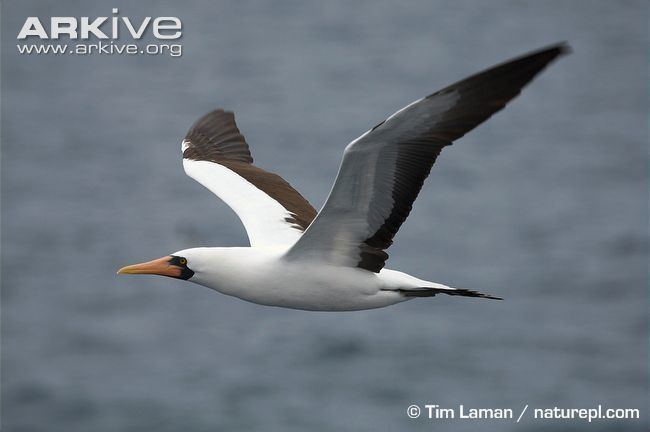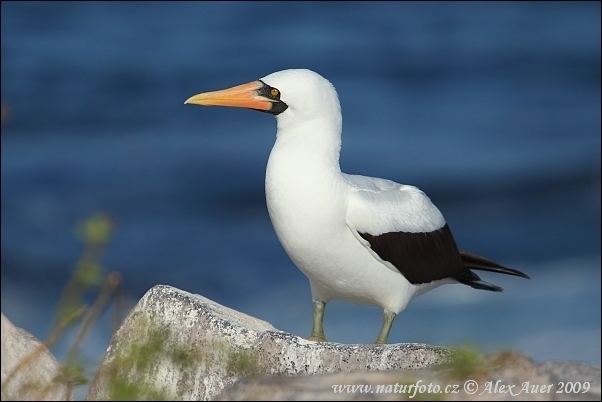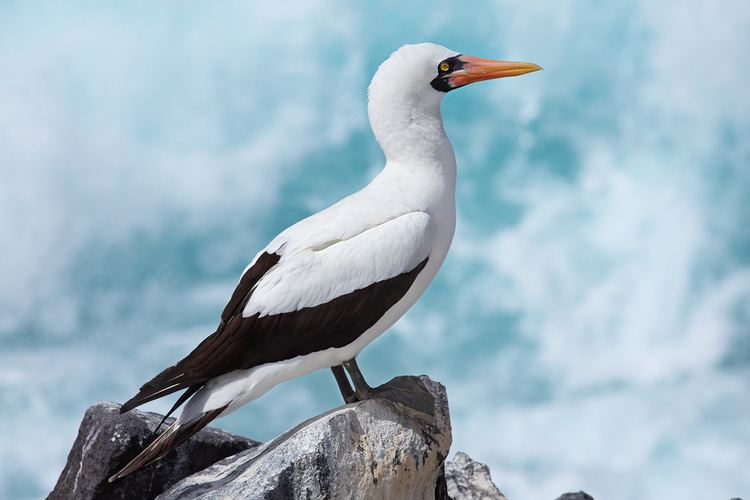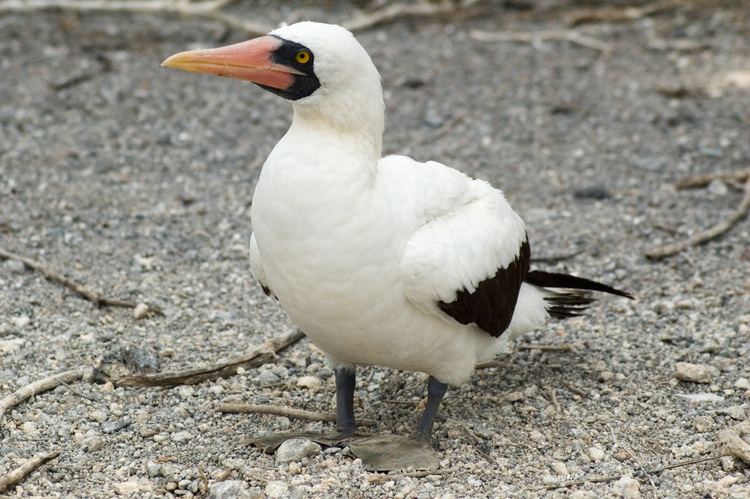Genus Sula Higher classification Booby | Phylum Chordata Scientific name Sula granti Rank Species | |
 | ||
Similar Booby, Bird, Red‑footed booby, Masked booby, Blue‑footed booby | ||
Nazca booby siblicide deadly instincts
The Nazca booby (Sula granti) is a colonial seabird in the family Sulidae, native to the eastern Pacific.
Contents
- Nazca booby siblicide deadly instincts
- Description
- Phylogenetics
- Distribution
- Feeding
- Reproduction
- Conservation
- References
Description

The species has a yellow iris, orange and pinkish beak, black facial skin in the form of a mask, and grey feet. Adults present white plumage with black tips of the wings and tail. The female is bigger and heavier than the male, has a slightly differently colored beak, and squawks while the male whistles. Chicks are snow white and fluffy, plumage changing to grey along with beak and feet upon fledging.
Phylogenetics

The genus Sula was previously placed in the order Pelecaniformes, but recently was collected in the family Sulidae and order Suliformes, together with 8 other genera. The Nazca booby was considered conspecific with the masked booby but was reassigned to a separate species based on mitochondrial DNA analyses. It is likely to have diverged 400,000-500,000 years ago.
Distribution

The species occurs in the eastern Pacific from the islands in Baja California to the Galapagos islands and the Isla de la Plata in Ecuador and Malpelo in Colombia.
Feeding

The Nazca booby preys on small fish caught by diving at high speed from flight into the ocean. The main food species is South American pilchard, but also take flying fish, anchovies and squid, specially during the El Niño events, when sardine numbers are low. Because of their sexual dimorphism, females tend to feed on bigger prey and dive deeper.
Reproduction

The Nazca booby nests near cliffs on bare ground with little to no vegetation. The male chooses and defends a territory, then enters into courtship to attract females.

Like many seabirds, the species has a long lifespan combined with low annual reproduction and long periods of development in the young. Clutch size is one or two eggs, due to the low hatching success, however when 2 eggs are laid and they both hatch, it is common for only one of the chicks to survive.
While many species of birds regulate egg temperature via an incubation patch, a layer of bare skin that allows birds to transmit heat into their eggs, the Suliformes instead use the skin on their webbed feet in addition to heat transferred from the breast. The feet are heavily vascularized, especially during the nesting period. Both the male and the female show parental care. Usually the chick that hatches first is bigger and becomes aggressive towards its sibling, excluding it from feeding and eventually starving it.
The energy investment on the parent’s part is very high, so their metabolic rates change during the nesting season. This causes both parents to loose similar amounts of body weight and suffer a decline in their immune system activity. This adjustment does not take place when the parents decide not to nest, a decision that is mostly driven by food availability, which in turn depends on ocean current and climate patterns such as those driven by the El Niño oscillation.
Conservation
The Nazca booby is classified as Least Concern by the IUCN. Although populations are thought to decrease to some extent, this decline is not strong enough to require classification in a threat category. Some of the factors that influence the decrease of populations are overfishing and marine pollution.
